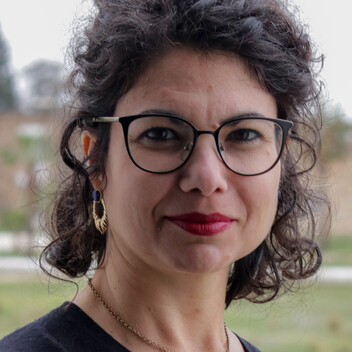Marianna Liosi
The Montage as Paradigm of Action
In the last decades, especially thanks to the widespread use of affordable portable technological devices, and social networks, the obsession for producing and consuming images and moving images has concerned most of us-observers, users, prosumers, and political subjects. This fever reached an extreme level, up to the point that the massive flow of photos and videos produced exceed the lifetime of an individual. The result is that most of these audiovisuals in circulation remain without interlocutors, yet exist. Regardless they are produced by professionals or amateurs, human beings, machines, or AI, images embody an ambivalent and contradictory sense of trustworthiness, which is often driven by emotions, despite the growing awareness of manipulations. These unreliable pieces of evidence prove that each anonymous individual is part of history, empowers self-determination through self-representation (e.g. vernacular videos), and imposes the acknowledgment that multiple narratives, including fake news, can or need to co-exist, despite all. Among the possible manipulations of images, cinematic montage is one of these practices. Defined as “la pensée organizatrice/the organizing thought” by Jean-Luc Godard, by juxtaposition of visual frames and sound, the cinematic montage is intended “as the connective act of creating relations between people, objects, and ideas, is of itself a form of history.”[1] Philosopher Gilles Deleuze recognizes montage in three different phases of film creation, starting from prior to shooting to the spectator’s space. In this way, the life as it is, the life into the film, and the film’s life unfold, one into the other.[2] This perspective shows an all-encompassing and expanded approach to the act of filming and, therefore, storytelling.
It conveys also the idea that cinematic editing is a process that exceeds the mere work of juxtaposing frames, rather it is extended in times and spaces, and includes several actors, beyond the filmmakers themselves. Among these actors, there is the viewer.
In this seminar, I propose to reflect upon the cinematic montage as a game-changing tool, and to experiment practically how to challenge it. Is it possible to extend its radical potential beyond the cinematic framework? Through constructing fiction, the montage turns into a paradigm of action. From this perspective, the seminar will develop through two main trajectories: on the one side, we’ll examine case-studies, such as audiovisuals in which different kinds of editing play crucial roles in decolonizing opaque and toxic narratives, shaping the communities’ identity and the sense of belonging, reclaiming justice, destabilizing viewers’ preconceptions, breaking bias, and transforming physical spaces inside and outside the cinematic frames. Within this context, the radical narrative potential of techniques such as re-use, mesh-up of found footage, and memes will be explored.
On the other side, focusing on our creative and active role as spectators, we’ll look at leftovers, meaning all those photos and videos that for political and social reasons remained unseen, abandoned, marginalized, discriminated, or orphaned. The purpose of the seminar is to question whether these audiovisuals need to be rescued from loss, and why they deserve to be seen. Controversial archives such as the internet, social networks, and other systems of rules, will be some of the privileged sources of research.
